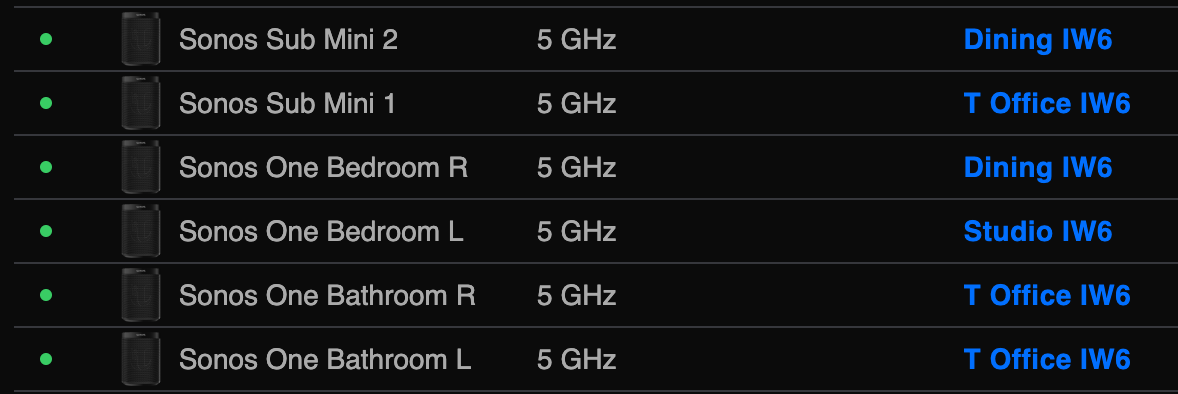I’m running into an issue playing music from Spotify both through the Spotify app as well as the Sonos app. I have 2 rooms, each with 2 Sonos One Ls and 1 Sub mini. I combine those together to be “Bathroom + Bedroom”. I will start playing a song from Spotify through Sonos, select both rooms together and when I hit play I get a split second of the song on all speakers and subs, and then it goes down to just one. It will eventually come out on all of them but can take upwards of 30-45 seconds. And if I skip a song, the whole process starts over.
It is not possible for me to run ethernet to any of the speakers at their locations, so I bought a boost and put it just one room away. This exhibited the same behavior (all speakers were showing as WM: 0). So I unplugged it and just went back to wireless.
Today I tried using both Sonos Radio and YouTube Music. Neither of these services exhibit the same behavior. They are extremely fast and responsive to starting, pausing, and skipping music. It’s a massive difference from the laggy Spotify experience.
I’m confident I’ll get told there’s wireless interference happening, but I just don’t see how that’s possible. Two other music services work just fine, and I can see all of the speakers connected to one of my access points with signal strengths between -32 dBm and -50 dBm.
Has anyone else experienced this? The experience is so bad using Spotify with my system that I honestly may give up and just use YouTube Music.
Diagnostic number: 307704793



